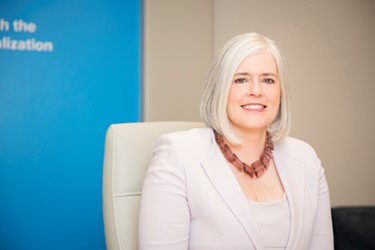Could Halozyme's U.S. Patent 8,846,034 Be Another Royalty Boon?

By Rob Wright, Chief Editor, Life Science Leader
Follow Me On Twitter @RfwrightLSL

Those familiar with Halozyme Therapeutics are likely aware that the biopharmaceutical company is currently developing a drug — PEGPH20 — for pancreas cancer. But they might also be familiar with Halozyme’s drug delivery platform, ENHANZE, a technology that has helped fill the company’s royalty coffers — forecasted to be nearly $1 billion by 2027. Dr. Helen Torley, the company’s president and CEO, likes the idea of having these two-pillars on which to focus. So, when I sat down to interview her for the upcoming January feature article in Life Science Leader magazine, I was curious to learn more about the issuance of U.S. Patent 8,846,034.
“PEGPH20 is a drug that targets hyaluronan [hyaluronic acid (HA)] that is around the tumor, just as ENHANZE targets hyaluronan that’s underneath the skin,” Torley explains. “Our hypothesis with PEGPH20, is if you have a lot of hyaluronan around your pancreas cancer cells, it will form a barrier and inhibit chemotherapy from being able to get into the tumor.” According to Torley, PEGPH20 temporarily degrades hyaluronan, thereby allowing greater access of cancer therapies to tumor cells. “Because we are developing PEGPH20 as a targeted therapy, we needed a way to determine and measure who had high levels of hyaluronan in their tumors,” she continues. Thus, U.S. patent 8,846,034 is actually a staining methodology to measure hyaluronan. “The patent is important in that it was core to developing a companion diagnostic (i.e., Ventana) being used in our Phase 3 study to identify which patients have high levels of hyaluronan,” she elaborates. As about 35 to 40 percent of the pancreas cancer population are HA-high, these patients are potentially not getting the full benefit of today’s best therapies.
Could This Be Something Other Companies Would Want To License?
“We have a very strong patent estate around the use and exploration of hyaluronan, and we don’t hear much about other companies working in this space,” Torley shares. However, she does note there are academic centers focused on understanding the role of hyaluronan in the tumor micro environment. “I believe we’ve given a number of them access to this methodology,” she says. “At this point in time, I don’t believe any other companies have access to it, but certainly investigators in the academic side are very interested.”
